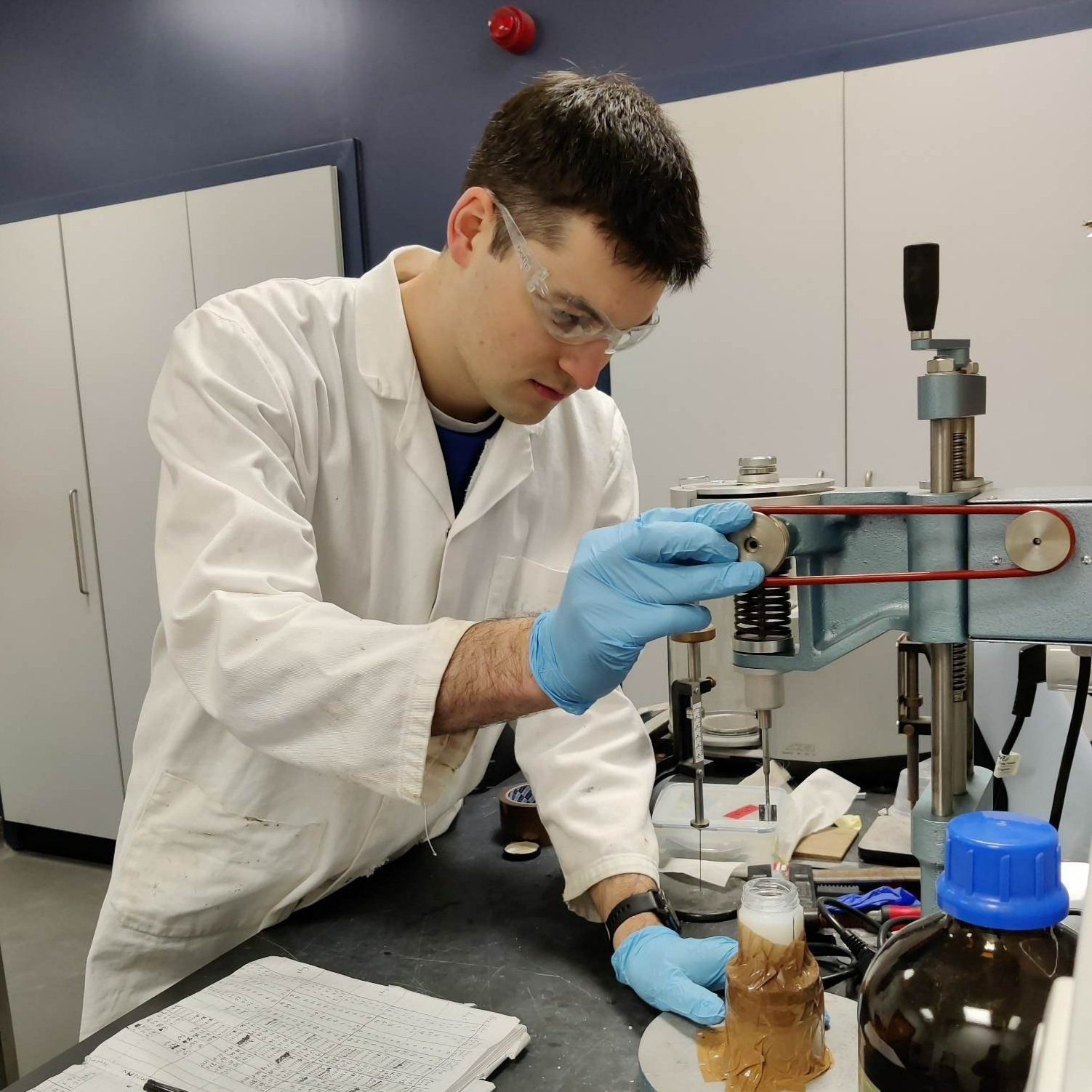Colloidal Silica Grout for Stabilisation of Underground Structures and for the Formation of Hydraulic and Chemical Barriers for Inhibiting Contaminant Migration
Summary
Led by: University of Strathclyde
In Collaboration with: National Nuclear Lab
The risks and high complexity of nuclear decommissioning operations makes them expensive and time consuming with current techniques. Colloidal silica is a novel, environmentally friendly grout with advantages over standard materials, but it isn’t yet widely used in decommissioning. The focus of this project is to make the case for colloidal silica in decommissioning by modifying and enhancing its properties, aiming to reduce the risk, cost, and complexity of operations. Colloidal silica is a water-like liquid which, after a desired period, will transition into a rigid gel. At nuclear sites, it has been injected into soil to act as a barrier to trap underground contaminants, but it may have other decommissioning applications. Through experimental investigation, various ways have been identified to improve the mechanical performance of colloidal silica, and potentially reduce its cost. This has been done using different additives, by adjusting the properties of the grout itself, or those of its surroundings. These findings may allow, for example, stronger, more durable, and potentially cheaper barriers to be produced for nuclear decommissioning.
Legacy nuclear sites often feature regions of contaminated soil, and containment structures which have deteriorated over time. Disturbances from surface-level decommissioning operations exacerbate the risk of contaminant release into the environment via groundwater and airborne particulate. Colloidal silica (CS) is a novel grouting material with water-like viscosity, which allows it to be injected into soil at minimal pressure to fill free porosity, where it eventually transitions into a rigid hydrogel without change in volume. CS gel’s very low hydraulic conductivity facilitates its use as a hydraulic barrier, but CS also strengthens weak soils and has potential as a chemical barrier, being able to trap radioactive ions of Cs-137 and Sr-90 via chemical sorption. Unlike standard cementitious grouts, CS is non-toxic and environmentally-friendly, has nano-scale particle size, allowing superior penetration, has precisely controllable gelation time, and presents no risk of ground disturbance. CS may also be suitable for other decommissioning applications, such as encapsulating radioactive waste canisters, or as a spray coating for contaminated dust.
These advantages give CS potential to make aspects of nuclear decommissioning cheaper, faster, and safer, but its application has thus far been limited. This research contributes to the case for CS’s use in nuclear decommissioning by characterising the behaviour of the grout, working with industry to identify applications for it in decommissioning, and identifying ways of modifying and improving its properties to best fit these and to reduce its cost. Compression tests have been conducted, showing how a range of factors and additives improve the mechanical properties of CS-grouted soil: compressive strength increases continuously with curing time, and samples cured in sea water (0.6M NaCl) are stronger than those in fresh water, with further improvement on increased concentrations and valences of salt (e.g. CaCl2). Kaolin clay additive also increases strength and may be used to partially replace silica mass to reduce cost. Combining CS with hydrophilic polymers also greatly increases flexibility. Shear vane tests show how CS is able to re-heal after damage, and pH, salinity and the presence of dissolved silica are used to enhance this. Increasing compressive strength improves CS’s ability as a soil stabiliser, and this, as well as increasing flexibility and re-healability gives it resistance to cracking and other damage. Ways to improve CS’s water retention, hydraulic conductivity, and sorption capacity are also under investigation.
Key results/outcomes:
The compressive strength of soil grouted with colloidal silica increases continuously according to a power law.
Strength is greater for samples cured in sea water (0.6M NaCl) as opposed to fresh water. This effect increases for higher concentrations of salt, and even more so with increased valences of salt (e.g. CaCl2).
Adding kaolin clay to the grout increases strength and may be used to partially replace the mass of silica in the grout to reduce cost.
Combining colloidal silica with the polymer PAM greatly increases flexibility.
Colloidal silica is able to re-heal after damage. This effect is independent of the time at which the damage occurred.
pH, salt concentration and valency, and the presence of dissolved silica can all be used to enhance the re-healing effect
Conference Posters:
David won best poster at the NDA 2023 PhD Bursary Conference in Manchester.
Talks Given at Conferences:
Conference paper published in the proceedings of the 2022 WM Symposia, in Phoenix, AZ.
Presented at the NDA PhD Bursary Conference 2021, 2022 and 2023
Presented at IWM Conference 2022 in Manchester
Due to present at InterPore 2023 in Edinburgh
Collaboration:
The project team have collaborated with the Complex Chemistry Group at the University of Glasgow’s School of Chemistry in order to use their facilities and expertise to add to the project.
Contact Info:
David Morrison
PhD student, University of Strathclyde
david.morrison.100@strath.ac.uk
Professor Rebecca Lunn,
Professor in Department of Civil and Environmental Engineering, University of Strathclyde.

